Post by Heraldic collection conservator Louise O’Connor
Science plays a central role in modern conservation of cultural heritage. By understanding the chemical structure of materials, a conservator can document the condition and potential degradation of historic objects, as shown in our last post. Now we’d like to show how conservators address damage in heraldic manuscripts through conservation treatment, making them accessible for digitisation.
To treat or not to treat
Conservation treatment is a more specialised intervention than the preservation of paper collections. Once damage to a manuscript is identified and documented, conservators evaluate potential treatment options. The condition of the heraldic manuscripts prioritised for treatment was complex; tight bindings, corrosive iron gall ink, fragile pigments and many disfiguring stains and old repairs. A conservator’s decision-making process considers not only the chemical degradation of the object, but also its historical integrity. In collaboration with our library colleagues, the object’s function for today’s user is also considered prior to treatment. Ethically, conservation treatments follow the principle of minimal intervention, similar to the concept of ‘first do no harm’. The choice of materials and techniques follows the idea of ‘retreat-ability’. The choice to intervene is never taken lightly, yet given the immense fragility of the heraldic manuscripts – treatment was urgent.
Selecting a conservation treatment
By consulting the collected body of conservation research, the treatments we choose for the heraldic manuscripts included disbinding, removal of surface dirt, chemical stabilisation of iron gall ink with calcium phytate process, removal of disfiguring stains and old repairs, pigment consolidation, tear repair and loss infill, and applying a conservation binding. Each unique manuscript was treated individually and we documented all processes. Here we show some of the steps from these conservation treatments, which resulted in an easily legible manuscript, preserved for present and future generations of the curious.
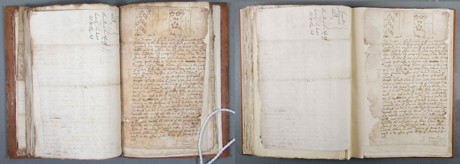
Treatments - step behind the scenes
The manuscript was first removed from its damaging binding. This involved removing degraded layers of glue and textile from its spine. Proteinaceous adhesives react to moisture. Applying a water-based poultice to the glue, allows it to slowly absorb the moisture. As the adhesive film starts to swell, it’s possible to mechanically remove it from the paper. As the adhesive rehydrates it also stinks to high heaven!

Grey dirt particles, loosely held to the surface of the paper by intermolecular forces, were removed by gently rubbing a soft eraser across the paper’s surface. This improves both the look and feel of the manuscript. The ink is not affected by this action; and utmost care and skill is needed to surface clean very fragile surfaces, such as mould damaged papers.
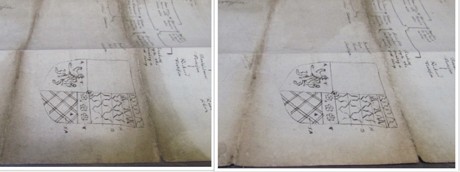
The ink was then tested for iron components. Indicator papers impregnated with a dye confirmed the presence of soluble iron (II) ions in the ink. The paper turns pink if it’s a positive result.
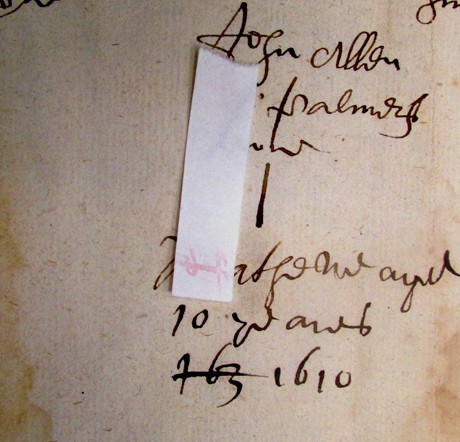
Washing paper removes acidic degradation products and reforms the hydrogen bonds of its cellulose structure, making it stronger. The paper sheets were floated in a sequence of specially prepared aqueous solutions.

After a few minutes, chromophores, which cause paper to discolour, solubilised into the bath water. The calcium phytate/calcium bicarbonate treatment cycle converted the remaining iron (II) ions into a stable chemical state and increased the pH of the fibres by leaving an alkaline reserve of calcium carbonate in the folio.
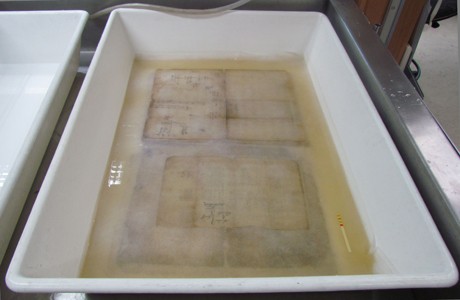
While the folios were still slightly humidified following this aqueous treatment, old paper repairs, previously held in place with starch or protein glues that have solubilised, were gently removed inch-by-inch. This task is a precise skill, too much tension and original fibres can be disturbed.
Paper folios with pigments are very delicate. Damaged pigment layers were secured using a dilute cellulose ether consolidant. Using magnification, it was applied locally to the affected areas using a thin brush or with a nebuliser as an aerosol.
Removing discolouration from paper with colours is a delicate and precise treatment. The sheets cannot be treated in a bath, as the pigment could be damaged. Instead, moisture was applied to the areas of discolouration using a rigid hydrogel. The gel was made from a polysaccharide derived from seaweed. It was cast into sheets and cut to the size of the stained area. The soluble discolouration diffuses into the gel through capillary action of water.
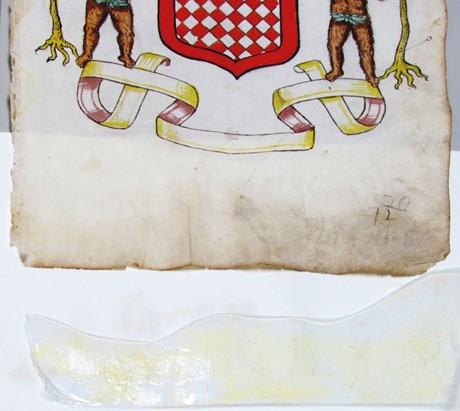
Tears and losses in the papers were repaired and infilled on a light-box. This transmits the light through the paper, making it easier to see the damaged areas. The folios were then guarded into new sections for a new conservation binding.

Tears and losses of each folio are repaired using Japanese paper.
Rebinding the manuscript volume was chosen to keep its historic integrity and its place in upright storage of the collection. The new conservation binding structure is a creative and skilled solution for the manuscripts. It has the look of an 18th century binding yet it also has a flexible spine and no adhesive. This means the binding can be easily reversed in the future. The new binding opens flat and this allows easy viewing of the manuscript folios for digitisation.
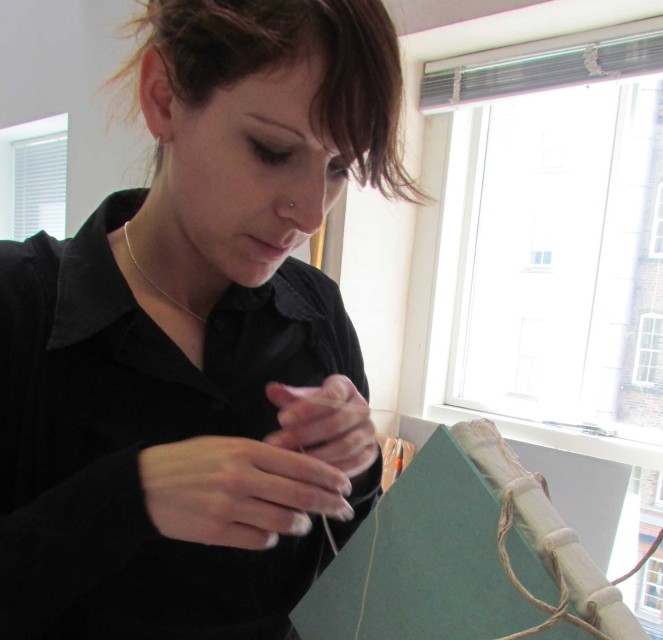
Though selective conservation treatment, the Heraldic Manuscript Conservation Project reduced the risk of damage to fragile and deteriorated folios. New information gathered during the treatments give greater understanding of these unique cultural items. These valuable manuscripts are now freely available online to researchers world-wide.
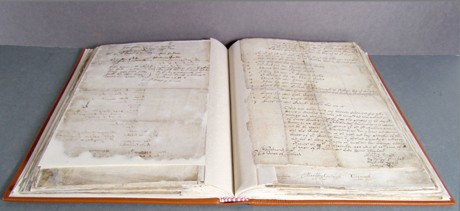
_______________________________________________________________________________
The conservation project (2015-2017) was supported by the Department of Heritage, Culture and the Gaeltacht. For more detailed information on the conservation treatments mentioned, see 'Heraldic manuscripts at the National Library of Ireland: Implementing the conservation of complex volumes' by Louise O'Connor and Élodie Lévêque, presented at the Care and Conservation of Manuscript 16 seminar.
Project conservators: Élodie Lévêque, Noureen Qureshi, Elizabeth Randell, Claire Dantin.
Heraldic collection conservator: Louise O’Connor

